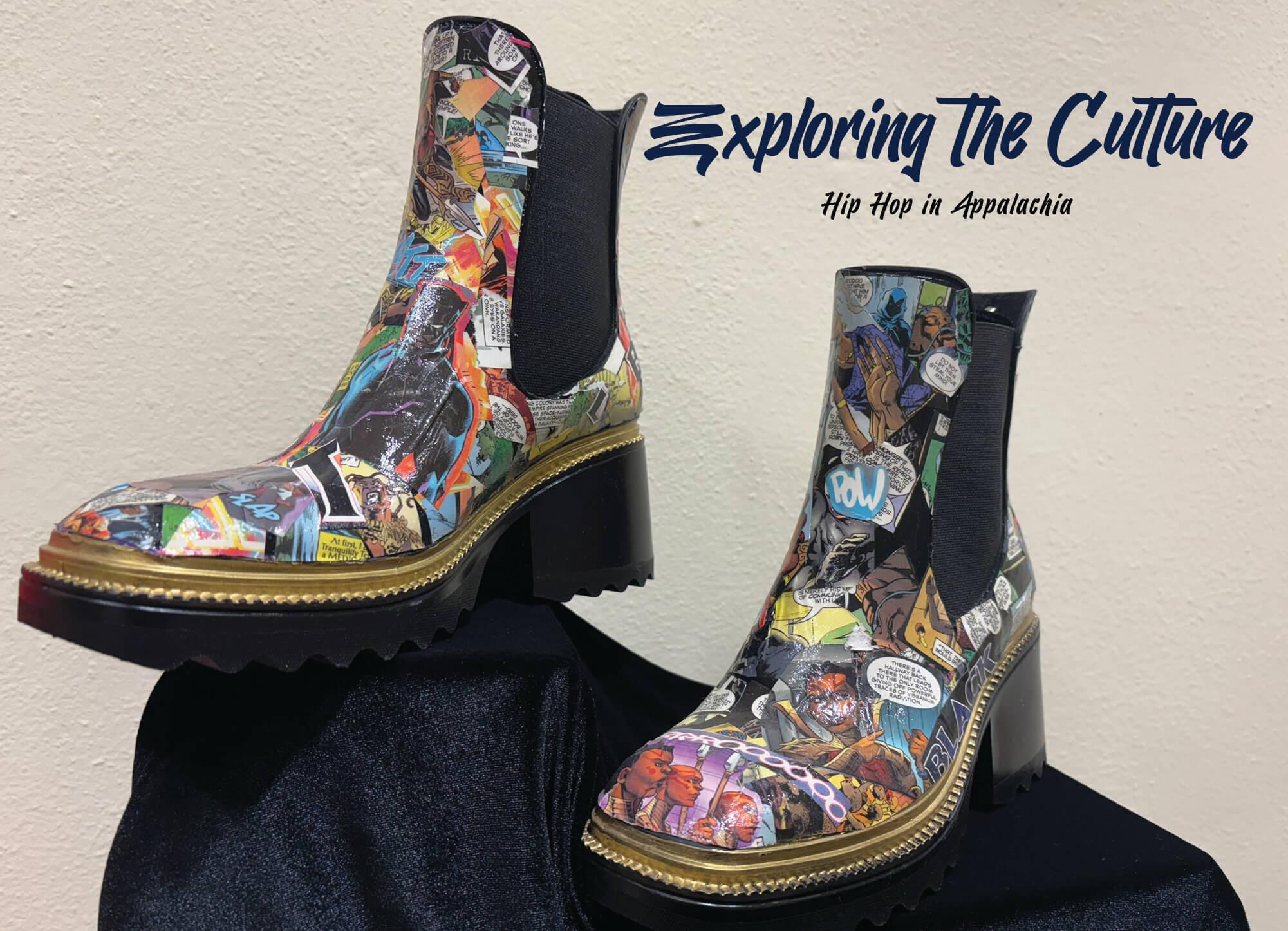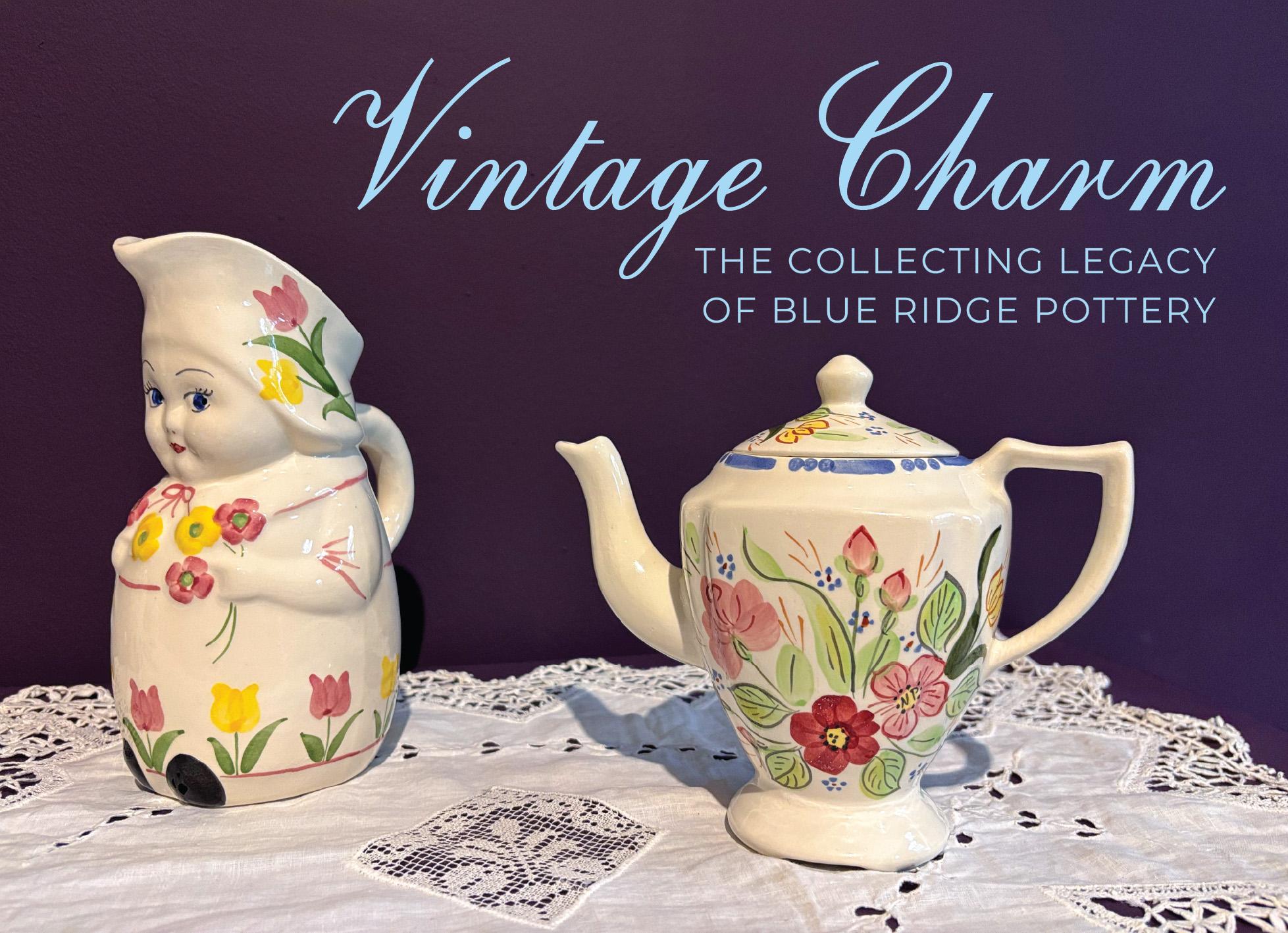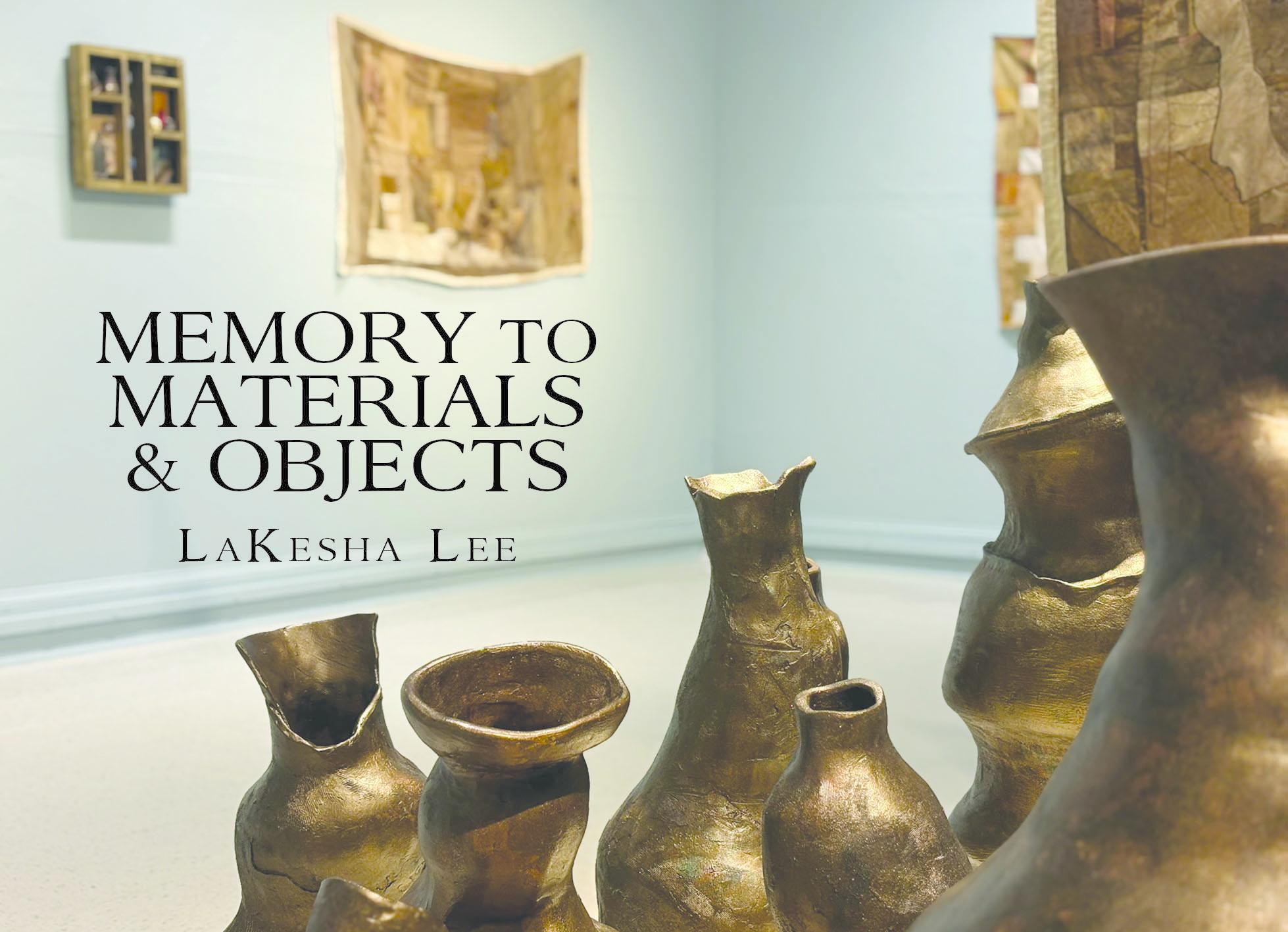CURRENT EXHIBITIONS
-
Exploring the Culture: Hip Hop in Appalachia (November 10 - February, 2026)
Featuring regional artists Jonathan Adams, Jason Flack, and Doniqua Joyner, Exploring The Culture celebrates the visual culture of Hip Hop in Appalachia. This exhibition is a part of the CELEBRATE! Hip Hop event occurring in the museum on November 13, 2025.
The Reece Museum has hosted an event series delving into Hip Hop culture every November since 2021. This programming is designed to be a holistic cultural experience that addresses connective spaces between participants and audiences through scholarship and academic lectures, visual art and an exhibition, community building and outreach, and of course, music and performance. The series began after the U.S. Senate passed a resolution that designated November 2021 as “Hip Hop History Month,” elevating Hip Hop’s status to equal other uniquely American genres such as jazz, blues, gospel, and rock and roll. Senate Resolution 331 states that “Hip Hop artists and supporters, originally of African heritage, now transcend many different ages, ethnicities, religions, locations, political affiliations, and socioeconomic statuses, which demonstrates the melting-pot quality of Hip Hop art and culture.”
-
The Place Speaks: Sacred and Artistic Genealogies of Appalachia (August 4 - December 12)
The Place Speaks:
Sacred and Artistic Genealogies of Appalachia
Now on view: The Place Speaks: Sacred and Artistic Genealogies of Appalachia, open through Dec. 12, 2025.
The Place Speaks is an exploration of how sacred histories are presented through visual art in Appalachia. Artworks by the Rev. Jimmy Morrow center divine visions and East Tennessee folklore while thematically overlapping with other visual artists in Appalachia and the American South. Using Morrow’s works and significant artifacts in the permanent collection that are grounded in regional placeness, The Place Speaks honors and respects the fusion of deeply personal, regional, and universal philosophies and beliefs as they relate to Appalachian landscapes. In addition to Morrow, this exhibition features the works of Dr. Rick Cary, Howard Finster, Abe Partridge, Bessie Harvey, William Cross, William Fields, R. A. Miller, Stacy Kranitz, Katie Murphy, Aaron McIntosh, Kristy Moeller Ottinger, Jeremiah Jenkins, and Charles Archer.
Join us Thursday, Oct. 16 from 4:30-7 p.m. for the exhibition reception. Programming will begin at 4:30 p.m. with live music by musician and visual artist Abe Partridge, followed by a panel of artists and scholars from 5:45 to 6:30 p.m. Panelists include Dr. Rick Cary, Dr. Jenna Gray-Hildenbrand, and Aaron McIntosh. The panel will be moderated by Dr. Jennifer Axsom Adler. Light refreshments will be provided. This event is free and open to the public. Other exhibition events and related programming will be announced on the Reece Museum events webpage.
About the exhibition: The Place Speaks is dedicated to honoring the Rev. Jimmy Morrow’s art, in addition to other celebrated Appalachian artists. The layout of the gallery is an intentional homage to the ways in which Morrow used visual art and documentary materials to communicate an ever-evolving narrative rooted in Appalachian placeness.
The Place Speaks acknowledges and values multiple forms of communication, living ties, and expressions of relationality that are facilitated through art. Through the representation and interpretation of Appalachian animism, the artworks selected for display offer examples of landscapes, plants, and animals that communicated with the artists. Additionally, this exhibit honors Morrow’s practice of documenting oral histories and folklore. Several of the artists selected, including Howard Finster, Abe Partridge, William Fields, R. A. Miller, and Aaron McIntosh, share similarities with Morrow’s practices in that their art features text as part of the works, and their artmaking exists as a form of documentary material culture. Other selected artists, such as Bessie Harvey and William Cross, use material from Appalachian landscapes to compose their visionary art. This exhibition has further afforded our staff the opportunity to connect with featured local artists who are actively making works connected to regional sacred beliefs and practices, including Katie Murphy, Kristy Ottinger, and Stacy Kranitz. The Place Speaks features a variety of methods and mediums in which Appalachian artists are recording histories, folklore, mythologies, and genealogies that shape the region we call home.
Our hope is that visitors will enter the gallery ready to commune and connect with the exhibited artworks on a personal level, creating a unique experience between guest, art, and artist. The Place Speaks was developed to inspire observations of culture that allow the artworks to “speak” on a multitude of levels. These conversations may expose similarities between beliefs and practices, while other conversations will highlight differences in religious beliefs. This exhibition was not created to condemn or convert, but to set the stage for exploration and observation based in curiosity, where depictions of sacred and visionary Appalachian landscapes are given space to speak for themselves.
-
Vintage Charm (September 29 - December 12)
Vintage Charm: The Collecting Legacy of Blue Ridge Pottery
Southern Potteries’ process of hand-painting the bisque of produced dinnerware with distinct designs before it was glazed started around 1938 and came to be known as “Blue Ridge Pottery.” The pottery began operations in 1917 in Erwin, Tennessee, and became the largest producer of hand-painted pottery and china in the United States. By the middle of the 1940s, the company’s annual production was estimated at 17 million pieces. The company boasted over 1,000 employees at that time, and approximately one-half of those employees were women who completed the detail-oriented, hand-painted underglaze designs that people had come to love.
The Reece Museum received its first donation of one Blue Ridge Pottery piece in 1986. The museum has since continued to foster relationships with collectors, building trust within the collecting community as an institution that prioritizes the preservation of this beloved piece of East Tennessee history. Don and Susan Burkett generously loaned 21 pieces from their private collection to diversify the offerings in Vintage Charm, which features approximately 80 Blue Ridge Pottery pieces throughout the gallery.
-
Memory to Materials & Objects (June 2 - December 12)
LaKesha Lee's work is an ongoing material dialogue between past, present, and future that honors self-representation, family legacy, and the resilience of Black identity. Through assemblage collages, sculptural forms, and ceramics, Lee uses found objects-old photographs, textiles, ceramics, and everyday artifacts-as a material language to explore memory, history, and cultural traditions.
Family is at the heart of Lee's practice. Drawing from matrilineal storytelling and African American craft traditions, she integrates photo repetition, material layering, and quilting techniques to recontextualize personal and collective histories. Repeating imagery creates new narratives, expanding the way the artist engages with every day, found resources.
"I work with materials that carry personal and communal significance, layering found objects, fabrics, and ceramics to build intimate and expansive material composition. These materials act as vessels of memory, balancing preservation and healing. Through cutting, stitching, firing, and assembling, my process becomes one of repair and reclamation-an homage to love, resilience, and continuity within the African American experience." says Lee.
LaKesha Lee is a multidisciplinary artist based in Knoxville, TN. Through her work, Lee provides self-empowerment by engaging with materials that foster storytelling and community connections. She uses techniques such as quilting, hand-building, and collage, combining found and self-made materials to craft visual narratives that bridge her family's past, present, and future.
Her work explores the premise of learning from history to shape a better future, challenging perceptions of Black bodies and physical labor. Lee honors her lineage by displaying visual fragments of family photos with family stories and southern historical references.
Through her evolving practice, she is cultivating a "material-language"-a diverse toolkit of methods that push the boundaries of creative expression. Her work not only preserves fragments of the past but also engages with African American history and the importance of Black representation. Found and handmade materials serve as a foundation for storytelling, reflecting resilience and connection across generations.
Lee's practice is rooted in material exploration, where accessible and natural materials become a language of freedom. For her, materials tell stories by combining unexpected elements and open pathways to discovery and connection. Her assemblage collages, sculptural installations, and ceramic works express a commitment to cultural preservation and innovation.Lee has participated in several notable exhibitions, including Embodying Culture: Women in Appalachia at the Reece Museum, STofART at the Gadsden Museum of Art, and the 77th Annual Student Competition at the Ewing Gallery of Art + Architecture at the University of Tennessee.
A recent Master of Fine Arts graduate from The University of Tennessee, Knoxville, Lee earned her Bachelor of Fine Arts from the University of Alabama at Birmingham in 20 I 9. Her work celebrates Black representation and family legacy, offering visual narratives that honor the past while inspiring a shared future.
LaKesha Lee served as the Reece Museum's 2025 Teen Renaissance Art Camp visiting art instructor that took place the week of June 2 through 6. The nine participating campers produced an exhibition with Lee leading the projects. The exhibition, Bound & Threaded Stories, is on display in the adjacent gallery through September 12.
Schedule a Tour:
Email Spenser Brenner with preferred dates, times, and estimated number of individuals for a tour. Please
schedule your tour at least one week in advance. We look forward to having you and
your group in the Reece Museum!
 Water Leak Investigation and ...
Water Leak Investigation and ... 


